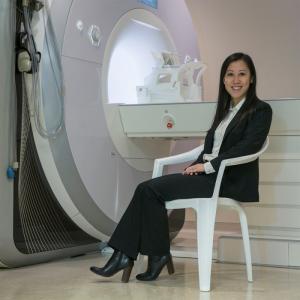In the emergency department, the temperature of the brain is critical information after someone has a stroke or cardiac arrest, and even more important during treatment. Yet it is difficult for doctors to accurately or directly measure brain temperature.
Magnetic resonance imaging technology being developed at Emory University School of Medicine could provide more accurate measurements. A team of researchers has received a three-year, $400,000 grant from the National Institute of Biomedical Imaging and Bioengineering (NIBIB) to monitor brain temperature while patients are undergoing therapeutic hypothermia after cardiac arrest. Therapeutic hypothermia, or controlled cooling, is a treatment used to protect the brain after loss of blood flow. While cooling is used in many hospitals, it is not widely implemented nor has it been optimized in terms of dosage or timing.
The project is led by Candace Fleischer, PhD, an assistant professor of radiology and imaging sciences at Emory. The grant is part of NIBIB’s Trailblazer program, which is designed for early stage investigators to pursue research in new directions.
“Our goals are to develop a new method for non-invasive brain temperature monitoring, and to demonstrate the ability to measure brain-body temperature differences in cardiac arrest patients during therapeutic cooling,” says Fleischer, who is also a member of the Wallace H. Coulter Department of Biomedical Engineering at Georgia Tech and Emory.
“Currently, therapeutic hypothermia is monitored using core body temperature due to a lack of non-invasive tools,” she adds. “Yet, we know brain temperature tends to be higher than body temperature, and brain and body temperatures are decoupled after injury. Accurate measurements of brain temperature are needed to optimize clinical implementation.”
The team’s approach is to measure differences in magnetic resonance properties between water, which changes with temperature, and the temperature-insensitive metabolite N-acetylaspartate. Fleischer says the technology could be used to better stratify patients for thermal therapies and monitor patients during treatment.
Clinical partners include Jason Allen, MD, PhD, associate professor of radiology and imaging sciences and division directory for neuroradiology, Jonathan Ratcliff, MD, assistant professor of emergency medicine and neurology, and Benjamin Risk, PhD, assistant professor of biostatistics and bioinformatics.


